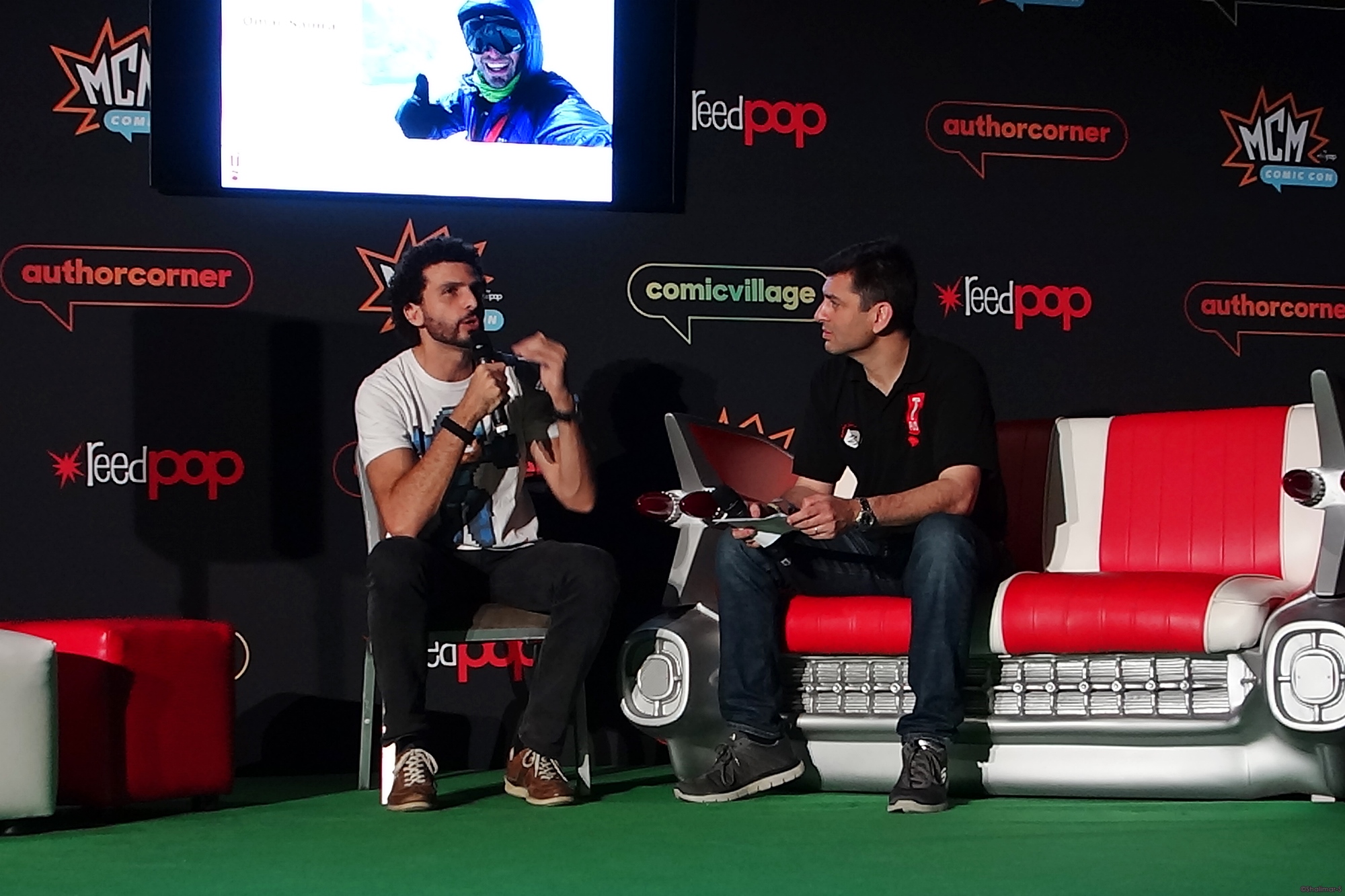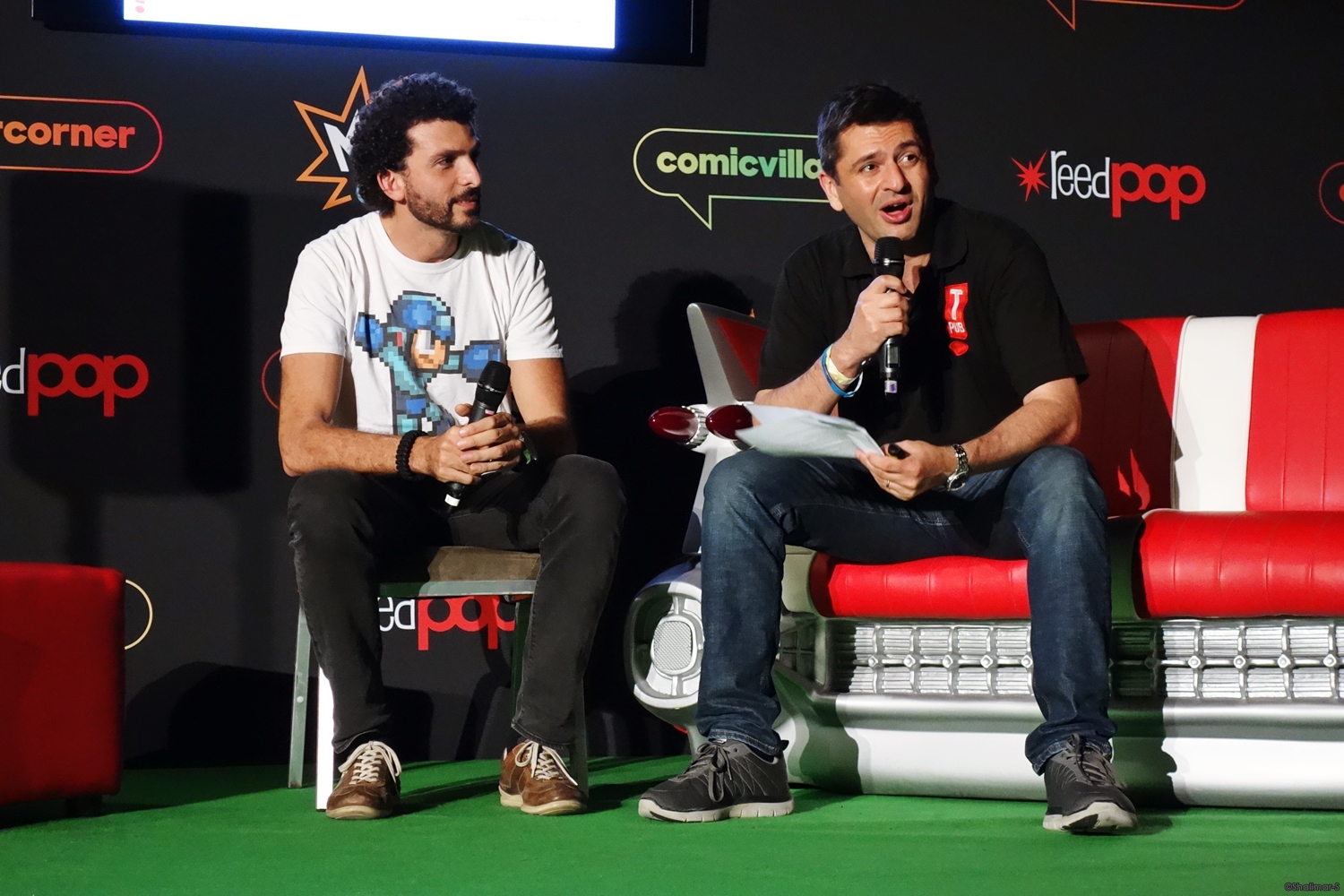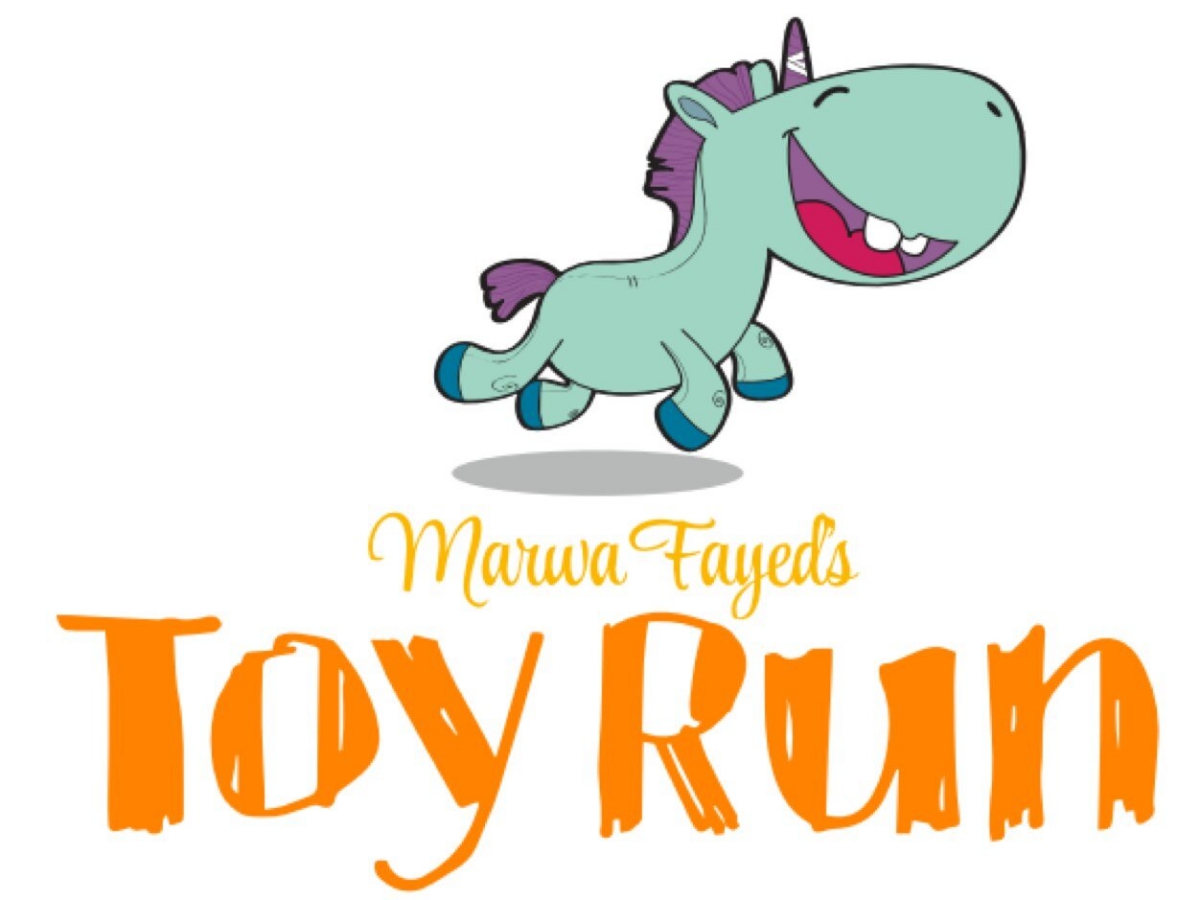The Sunday of MCM London Comic Con saw Neil Gibson of TPub Comics introduce Omar Samra onto the Comic Village stage, describing him as a legend. Neil explained that Omar had become the first Egyptian and youngest Arab to climb Mount Everest, he has climbed the Seven Summits and he has been to both the North and South Pole, making him one of the few people to complete the Explorer’s Grand Slam. He has named three mountains, rowed across the Atlantic Ocean (a perilous attempt, of which there is a documentary film, Beyond the Raging Sea), founded his own business doing adventure tourism, done TED talks and also set up the charity Marwa Fayed’s Toy Run. So why was Omar at MCM London Comic Con? Turns out he is collaborating with TPub on a new comic.
 Neil began by asking Omar why he does these insane things. Omar pinpointed it back to being diagnosed with Asthma when he was 11 years old. In order to combat it, he committed to running, which helped expand his lungs. At 16 years old, he got the chance to go to the Swiss Alps for the first time. “As soon as I stepped into the mountains I felt it was almost like a familiar place,” said Omar. “With the naivety of a 16-year-old at that time, I said, ‘If I climb this little small mountain in Switzerland, maybe I can climb the highest mountain in the world.’”
Neil began by asking Omar why he does these insane things. Omar pinpointed it back to being diagnosed with Asthma when he was 11 years old. In order to combat it, he committed to running, which helped expand his lungs. At 16 years old, he got the chance to go to the Swiss Alps for the first time. “As soon as I stepped into the mountains I felt it was almost like a familiar place,” said Omar. “With the naivety of a 16-year-old at that time, I said, ‘If I climb this little small mountain in Switzerland, maybe I can climb the highest mountain in the world.’”
It took 12 years of training and climbing mountains till he conquered Mount Everest. Upon reaching the summit of Everest, Omar said, “Having gone through all of this effort to get there, the feeling that you have there is amazing. You can’t really describe it. And the view that you have, obviously you can only see as far as the eye can see, but you’re literally on top of the world. You feel like you just have this endless horizon.” This then led to the Seven Summits challenge.
“Just after I climbed the Seven Summits, my wife was giving birth,” said Omar. “I went from Alaska to Miami to meet her and experience that.” Elated after finishing the Seven Summits he was excited at the prospect of being a father, only for the situation to turn bleak. “Within days we found ourselves in the intensive care unit and my wife passed away.” Omar added that in the following months he was unable to work as he felt his life crumbling around him.
Omar then recalled an initiative his wife had started. “She wanted to collect toys from friends, family and people around her and then redistribute these toys to people who needed them more. It was something that she talked about a lot. So I said, ‘Why not actually revive this idea and just do a little initiative of collecting 200 toys and distributing them?’” Omar revealed that they set a target of 30 days, but they had managed to collect 200 toys in just five days. So he raised the target to 500 toys, only to achieve that in a week.
After ending up with thousands of toys Omar said that he thought, “Well, why stop here? Why can’t this be something that’s ongoing?” A few years later, and after being awarded a small grant, it eventually evolved into a registered charity. Named Marwa Fayed’s Toy Run (after his late wife), it has given toys to over 100,000 children around the world.
Neil then asked about the charity’s logo, a unicorn with a bandage, wanting to know where the inspiration came from. “The unicorn is a magical, fantastic figure,” said Omar. “The idea was to distort reality and imagination. Because people donate the toys, we also have them experience wrapping the toys, cleaning the toys and then distributing the toys. So when we go into these experiences, it’s quite magical when you have tens or hundreds of kids, everyone is happy and [there is] all of that energy. We just wanted something that was not of this world. So the unicorn felt quite apt for that.”
 Omar revealed that children as well as adults have emotional connections with their toys and recounted his experience of losing a loved toy; a toy Smurf given to him by his late wife. “It was the first present that she actually gave me and she had one which looked exactly the same,” said Omar, as he mentioned that they would even take the Smurfs with them when travelling. “When my wife passed away, that Smurf and I became inseparable. I would take it everywhere with me. It would sometimes be hanging out of my pocket.”
Omar revealed that children as well as adults have emotional connections with their toys and recounted his experience of losing a loved toy; a toy Smurf given to him by his late wife. “It was the first present that she actually gave me and she had one which looked exactly the same,” said Omar, as he mentioned that they would even take the Smurfs with them when travelling. “When my wife passed away, that Smurf and I became inseparable. I would take it everywhere with me. It would sometimes be hanging out of my pocket.”
“When I went skiing to the North Pole in the Arctic, I took the Smurf with me to keep me company,” continued Omar. “On the second day of the expedition, we were in a very severe storm, a blizzard, very poor visibility for about 5-6 hours. Eventually, we got to the tent, we just threw everything down, I put all my equipment down, was really tired and I started looking and I couldn’t find the Smurf. I freaked out. I kept looking, I couldn’t find it. So I got into complete panic mode. I went into the other tent where the guide was and said, ‘Listen, I’m going to go out and look for this thing.’
He was like, ‘You’re mad, it’s literally a blizzard outside. How do you find a blue and white Smurf in the middle of an Arctic blizzard?’ He said ‘What is it, what does it mean to you?’ I explained very quickly, and I’ll never forget this because the guide just looked at me like, ‘Alright, go, but just don’t lose sight of where we are.’
Omar explained that after just 5-10 minutes of searching he stopped as the futility of what he was doing set in and he was experiencing the same feeling of loss again. “It also compounded the idea of what a toy can actually mean to a person,” said Omar.
“We wanted to create more emotional connections with the charity, with the cause, with children,” said Omar, feeling that the best way to do this was to design something physical that people could interact with. “Then the idea came about of, how do we create an origin story for the character, the unicorn? I decided I wanted to do a story, I want to create a comic about this.” However, Omar wasn’t sure where to begin, until he met up with Neil in London.
Omar explained that his late wife was into writing children’s books, having started writing two, but she never finished them. “She developed really interesting characters,” said Omar. “They were quite vivid in terms of the personality of the characters.” When developing the origin story for the unicorn, it was given the name Nadra (which means rare), while Omar wanted to include certain messages. “One of them is about the spirit of giving and the joy of giving, which is part of what the charity stands for,” said Omar. “The other thing is what we were talking about before, the idea of loss. It’s not just loss of life, it could be loss of many other things. Children at a very young age go through a lot of emotions and don’t know how to deal with them, or how to interpret what they’re feeling. Through the story the character Nadra lives, the comic is meant to be able to give children tools to be able to navigate difficult things that we all go through.”
 In the early stages of development, Omar passed on to Neil screenshots of his late wife’s handwritten notes on her incomplete stories. “Neil quite cleverly built all of these characters into this story,” said Omar. “A lot of the characters in the story were actually written many years ago and obviously my wife would never have known that they would end up here in this way, which I think is a beautiful thing.”
In the early stages of development, Omar passed on to Neil screenshots of his late wife’s handwritten notes on her incomplete stories. “Neil quite cleverly built all of these characters into this story,” said Omar. “A lot of the characters in the story were actually written many years ago and obviously my wife would never have known that they would end up here in this way, which I think is a beautiful thing.”
As initial character designs of Nadra were shown on screen, both Neil and Omar revealed that they had discussions on whether to keep the characters looking just like their animal counterparts or have them look more anthropomorphic with human traits.
Asked what was next for the project, Omar revealed that he was aiming to launch a Kickstarter campaign to help raise the funds needed to produce it. “We hope to use the comic as a vehicle to raise money for the charity and to be able to fund a lot of the projects that we do in different parts of the world,” said Omar. He also added that he hoped to turn the character Nadra into an actual toy. “The comic is the main project and the offshoot is hopefully the toy, which will be more of an educational tool.”
Originally published on MyM Buzz on 31 May 2018.




